DEP investigates hacked mangroves at Sandpiper Bay Resort in Port St. Lucie
A Port St. Lucie resort has been under investigation since the state found about 944 mangrove trees — a swath the length of the Caribbean Princess cruise ship — illegally cut down to nubs on the shoreline.
At Sandpiper Bay Resort, investigators found piles of healthy red and black mangroves in dumpsters, with cut pieces measuring 15-26 feet long, reports say. Investigators also found sand dumped over the roots, with no barrier to keep the fill from washing into the North Fork of the St. Lucie River.
The Florida Department of Environmental Protection measured high turbidity in the water, which can block sunlight and kill seagrasses — the main food source of starving manatees, according to reports.
Resort officials reportedly blamed a tornado, which meteorologists told TCPalm didn’t exist. They also told DEP they didn't know Florida law protects mangroves or that they needed a permit to cut them, reports say.
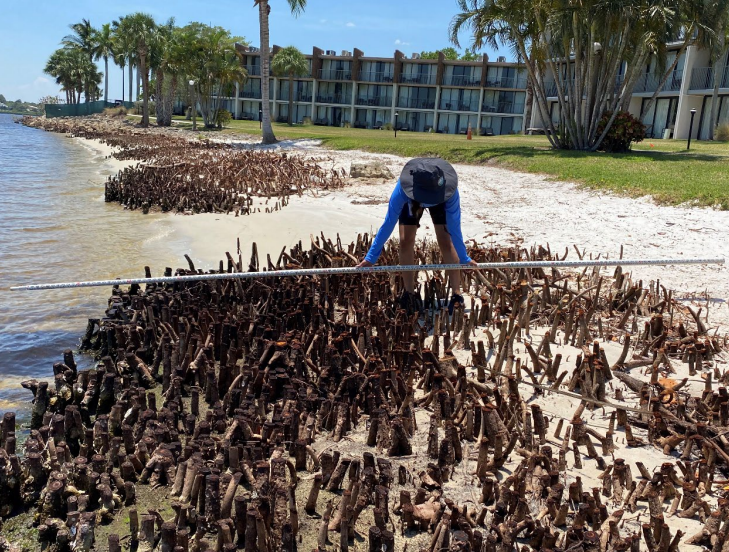
DEP reports name Mike Giarogalo, the property manager, and Michael Mota, a representative of the property owner. A Boston Globe investigation found Mota is “being sued by creditors and vendors in 10 lawsuits totaling more than $500,000 and has left furious investors and vendors in multiple states.”
Mota did not respond to TCPalm’s emails seeking comment.
Altitude International Holdings, Inc. bought the former Club Med resort for $55 million and renamed it. DEP addressed its warning letter to Chad Freed at Store Capital Acquisitions, LLC in Arizona.
DEP investigates Sandpiper Bay Resort
DEP allows people with a permit to selectively trim mangroves, preferably by undercutting with uneven heights, but each tree must remain at least 6 feet tall. Property owners typically want to trim mangroves, which grow along shorelines of waterways, to maintain a water view.
The resort did not have a permit, according to DEP.
After an angler reported the incident to DEP on May 8, the agency:
Inspected the site on May 10, May 17 and May 31
Sent the resort a warning letter May 30
Questioned resort officials on June 22.
DEP spokesperson Jon Moore did not answer TCPalm’s questions about the incident, investigation or possible punishment.
“Our investigation remains ongoing,” Moore said in an email to TCPalm. “The department is committed to enforcing Florida's environmental laws and holding violators accountable.”
The resort could face over $236,000 in fines. DEP can fine violators up to $250 for each illegally "altered" mangrove tree and up to $100 for each illegally "trimmed" mangrove tree. Trimming means cutting twigs, limbs, branches and leaves, whereas altering means human-induced removal, defoliation or destruction.
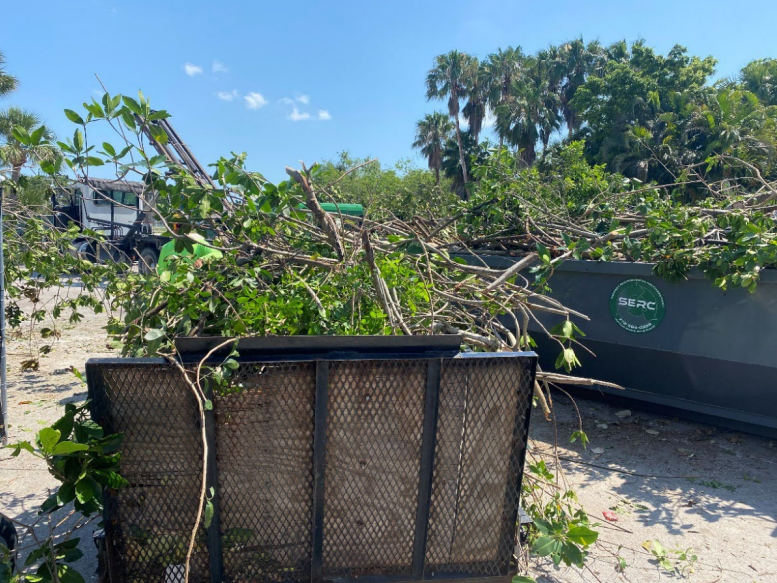
DEP fined a Hutchinson Island developer $32,000 in 2019 after a TCPalm investigation exposed they had massacred a 50-foot-long swath of mangroves along A1A. The fine came three months after DEP issued a warning letter.
After a River Vista resident’s landscapers chopped down mangroves, DEP fined him $14,000 to replant them, and required annual photographs of the regrowth for 10 years, according to a neighbor, Jim Dirks.
Dirks is the one who discovered the incident at Sandpiper Bay Resort during a May 7 fishing trip with another neighbor. Dirks has been fishing those waters in his old “rock n’ roll” boat for 44 years.
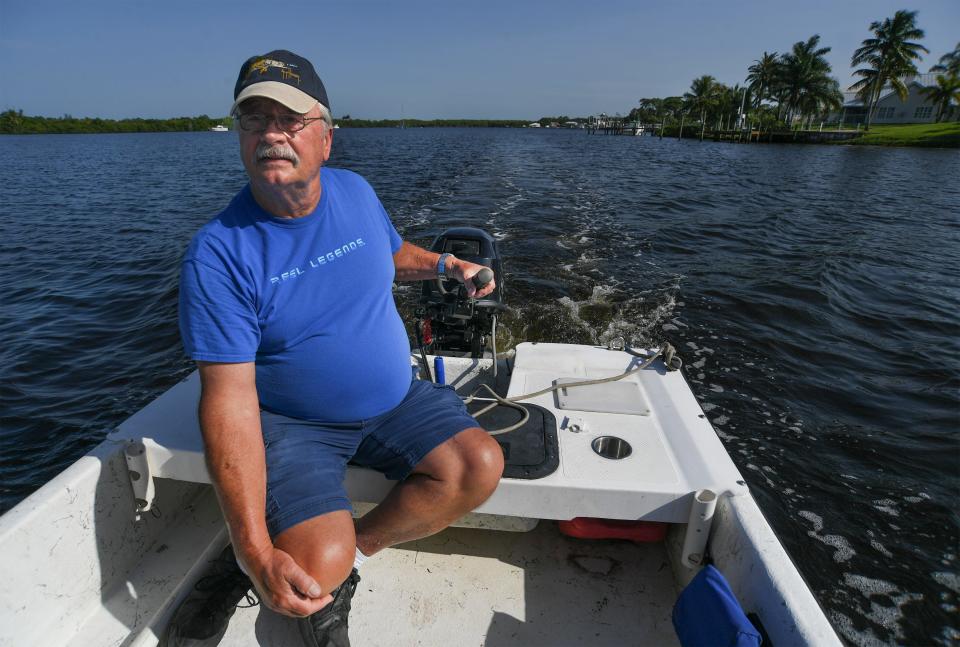
After seeing the destruction, he said he stormed home with some sail cats for dinner and reported the resort the next day. Fish have not been biting in his honey hole since then, he said.
"It bothered me beyond compare. It angered me and I was disgusted,” Dirks said. “I'm hoping that they pay dearly for it … I’d like to see somebody go to jail. … I don’t think it’s a criminal felony, although it probably should be.”
Environmental benefits of mangroves
The once 24-foot-tall mangrove trees, which lined a shoreline nearly 10 football fields long, had grown halfway to the fence line near a pool, hotel rooms and volleyball court, according to DEP and Dirks.
It could take 10-15 years for the mangroves to return to their former glory, said Florida Oceanographic Society chief scientist Lorae Simpson.
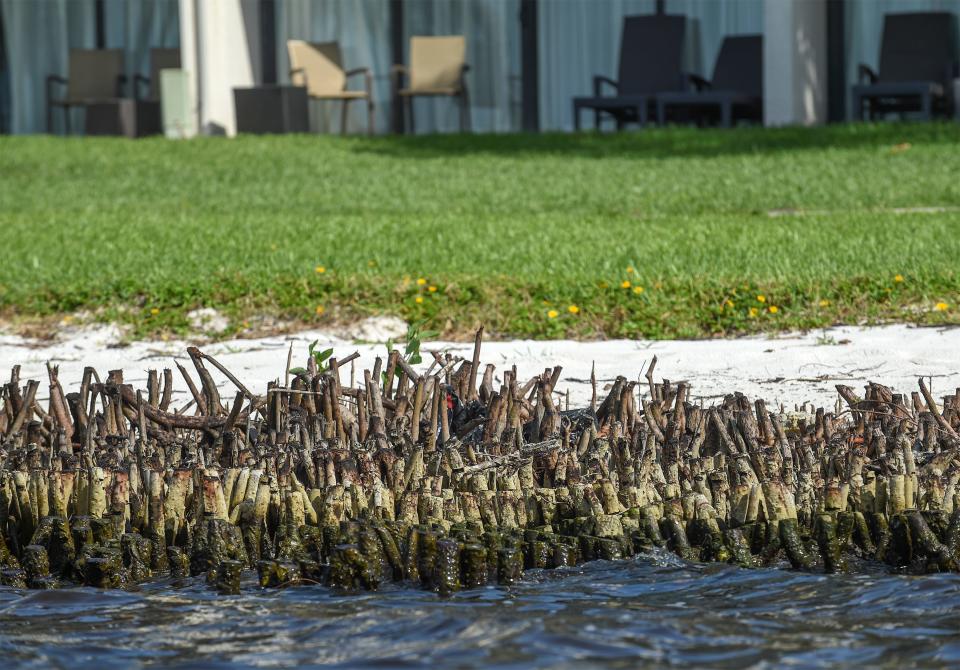
Mangroves have sturdy roots that trap sand and hold it down, which prevents erosion and builds islands. Fish, crabs, shrimp, oysters and other critters find refuge in the underwater roots. Ospreys use the treetops for building their nests and perching while hunting and eating their catches. Mangroves also filter pollutants from the water.
“They pull up a lot of the nutrients before the nutrients make it into the water column, which is very important to the water quality of our ecosystems," Simpson said.
Mangroves are also resilient against tornadoes, Simpson said, commenting on the resort’s false claim that a twister yanked all the trees out of the ground.
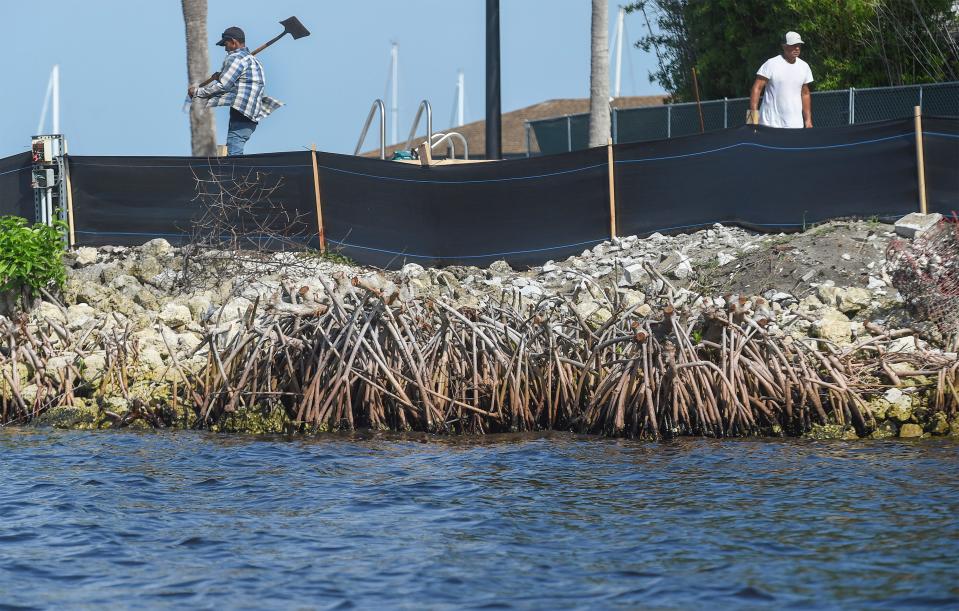
“The worst that would happen is (mangroves) might get defoliated, and they would be able to survive through that,” she said. “They could fall over, but to be completely ripped out, that is the most ridiculous thing I’ve ever heard.”
Without the protection of mangroves, Sandpiper Bay Resort's exposed property could be damaged in severe weather.
“If they get a hurricane, that pool may end up floating down the river,” Dirks said, laughing.
Katie Delk is an environmental reporter for TCPalm. Contact her at katie.delk@tcpalm.com or 772-408-5301. Check for updates at @katie_delk.
This article originally appeared on Treasure Coast Newspapers: Mangrove trees cut at Sandpiper Bay Resort in PSL draws investigation

 money
money 